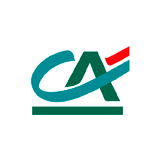Minimum Volumes
Author: Tatiana Kryvolapchuk
TEXT:
Deteriorating economic environment complicates interaction between the banks and legal entities. Even if some of them contemplated aggressive development in this segment, those plans are now suspended. Only a handful of financial entities continue lending to business focusing on the existing clients and postponing new large-scale investment projects. Larysa Bondarieva, Board Member in charge of Corporate and SME Business in Credit Agricole Bank, talked to Investgazeta about peculiarities of working with corporate clients in the challenging economic and political context.
What segments are the banks currently funding?
Agriculture, foodstuff production pharmaceutical industry, both producers and distributors. FMCG sector as well. In general, banks grant loans to companies producing goods that are really in demand.
In the current situation, what is the target purpose of the banks’ lending to companies?
First and foremost, their daily needs; neither banks, nor the customers are suspending projects that are already underway. We do understand that by “freezing” funding in these cases we let our customers down and we incur losses as well. Besides, regardless of any crises, every spring our agrarian customers need to start sowing and it requires funding. That is why we continue granting loans to our agrarian customers.
But when it comes to the projects connected with infrastructure or purchase of new equipment, the customers are trying to have them postponed, till fall at least.
What credit products are in demand right now?
We offer documentary lending instruments which are cheaper. Cost of cash financing currently exceeds 20%, while a bill or a bank guarantee costs up to 5% p.a. So they are in most demand. Basically, every economic crisis gives an impulse for trade financing development. This is the time when demand for bank guarantees and bills always grows. Last year the share of documentary transactions in our SME loan portfolio during a sowing campaign equaled 50%. Similar trends are observed this year. At the very minimum, we expect the results to level with the previous year, but seeing the “customer moods”, the share of documentary instruments might even grow.
Has the level of past dues in corporate segment changed?
It is too soon to say. Past dues may be driven both by hryvnia devaluation and by market downslide. We do not see any major issues so far. But we are bound to see the depth of the problem in the coming months.
Which companies, in your opinion, are at risk and which will easily weather the crisis?
The exporters found themselves in the most favorable position. They suffer the least from the effects of devaluation as they receive their export revenues in foreign currency. On the other hand, there is a risk of insufficient diversification of the export and companies that have to change the geography of distribution really quickly might face problems.
Devaluation leads to increase in prices for imported goods and the importers might suffer as a result. It is possible that the imported goods in the market will be replaced by their counterparts produced in Ukraine, the way it happened in 2009.
Foreign currency mortgage granted prior to the crisis of 2008 may give some banks a headache. Not all banks managed to get rid of that portfolio and they will have to focus on these loans once again.
What are your estimates for the corporate lending segment till the end of the year?
I believe that loan portfolio will not grow in the system in general, and certain reduction is possible. The banks that continue lending will enjoy a limited 5% to 10% organic growth.
What changes in credit rates are to be expected?
During the first half of the year the rates will remain at the present level.
If there are positive signals from the market like stabilization of economic and political situation, receipt of tranches from the IMF and EU, we may hope that in the second half of the year the banking system will manage to reduce rates below 20%, to 18-19% p.a. For the time being, credit rates are at about 22-23% p.a.


 Useful information
Useful information
 Useful information
Useful information
 Useful information
Useful information
 Useful information
Useful information
 Useful information
Useful information
 Useful information
Useful information
 Useful information
Useful information
 Useful information
Useful information
 Useful information
Useful information
 Useful information
Useful information
 Useful information
Useful information
 Useful information
Useful information
 Useful information
Useful information
 Useful information
Useful information
 Useful information
Useful information






